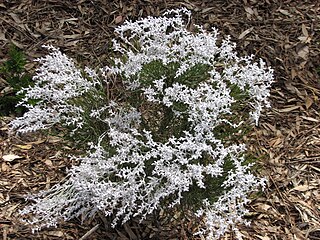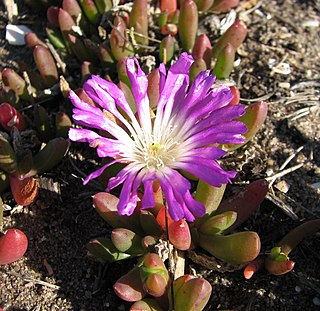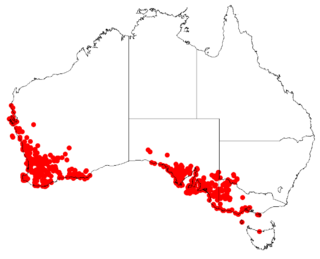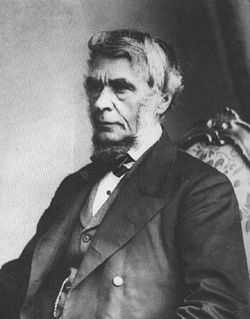
Conospermum stoechadis, commonly known as common smokebush, is a shrub endemic to Western Australia.

Stirlingia simplex is a plant endemic to Western Australia.

Stirlingia latifolia, commonly known as blueboy, is a plant endemic to Western Australia.
Amphibolis antarctica, commonly known as wire weed or sea nymph, is a seagrass found in coastal waters of southern and western Australia.

Carpobrotus virescens, commonly known as coastal pigface, is a prostrate coastal succulent shrub of the family Aizoaceae native to Western Australia. The Noongar peoples know the plant as Kolbogo or Metjarak.

Disphyma is a monotypic genus of succulent shrubs. Commonly known as round-leaved pigface, New Zealand iceplant and purple dewplant, it occurs in South Africa, Australia and New Zealand. Its sole species, Disphyma crassifolium, is divided into two subspecies, D. crassifolium subsp. crassifolium and D. crassifolium subsp. clavellatum.

Disphyma crassifolium subsp. clavellatum is the subspecies of Disphyma crassifolium that occurs in Australia and New Zealand. It is sometimes known by the common name rounded noon-flower

Sesuvium portulacastrum is a sprawling perennial herb that grows in coastal areas throughout much of the world. It is commonly known as shoreline purslane or (ambiguously) "sea purslane," in English, and dampalit in Tagalog.

Stylidium rupestre is a dicotyledonous plant that belongs to the genus Stylidium, a species sometimes named as the rock triggerplant. It is found in Southwest Australia. The species was first described by Otto Wilhelm Sonder.
Muellerolimon salicorniaceum, the sole species in genus Muellerolimon, is a succulent perennial herb or shrub that grows on salt mudflats in Western Australia.

Daucus glochidiatus, commonly known as Australian carrot, Austral carrot or native carrot, is a species of herb in the flowering plant family Apiaceae. It is native to Australia and New Zealand.
Roepera similis is a succulent annual herb native to Australia.

Melilotus indicus, sometimes incorrectly written Melilotus indica, is a yellow-flowered herb native to northern Africa, Europe and Asia, but naturalized throughout the rest of the world.
Nicotiana occidentalis, commonly known as Native Tobacco, is a short-lived herb native to Australia.
Nicotiana occidentalis subsp. hesperis is a short-lived herb native to Australia.
Plantago debilis is a species of herb native to Australia. Common names include shade plantain and weak plantain.

Podotheca angustifolia, commonly known as Sticky Longheads, is a species of herb native to Australia.
Triglochin trichophora is an annual herb native to Australia.
Stuartina is a genus of small annual herbs in the pussy's-toes tribe within the sunflower family, native to Australia.
- Stuartina hamataPhilipson - hooked cudweed or prickly cudweed, native to South Australia, Victoria, New South Wales and Queensland.
- Stuartina muelleriSond. - spoon cudweed, native to Western Australia, South Australia, Victoria

Astroloma foliosum, commonly known as candle cranberry, is a small shrub species in the family Ericaceae. It is endemic to the Perth region in Western Australia.














